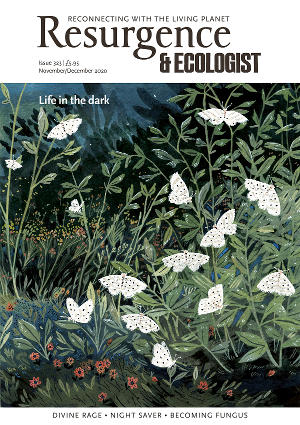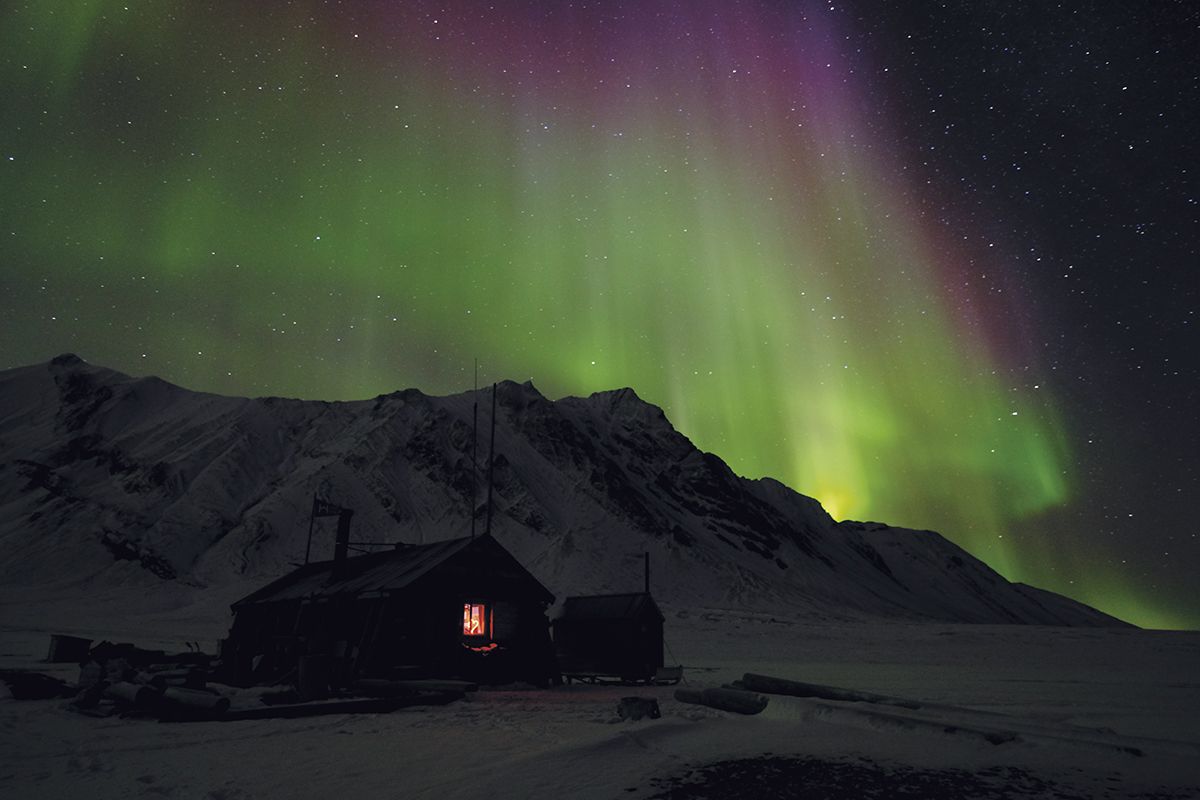Svalbard is an archipelago of Arctic islands situated halfway between Norway and the North Pole. During winter this region is battered by fierce storms and ferocious winds and pitched into the freezing black of the polar night. The king of the Arctic, the polar bear, roams the sea ice, not hibernating, but prowling for seals, and the aurora borealis unveils breathtakingly beautiful neon lights, which streak across the sky.
Two women recently endured this region’s harsh conditions for an entire year completely alone. Their mission: to collect weather and wildlife observations and data as part of a project that seeks to engage as many people as possible across the globe in a conversation about the climate crisis. Their project is named Hearts in the Ice.
Hilde Fålun Strøm has lived in the frigid north for over two decades. A keen photographer, hunter and adventurer, she knows from first-hand experience that her beloved Svalbard is in the grip of a climate emergency. It is in fact the fastest-warming place on the planet. In the words of Kim Holmén from the Norwegian Arctic Institute: “Partly due to Svalbard being at the end of the Gulf Stream, the archipelago’s west coast fjords no longer freeze in winter. The consequence of warming here is that there are more storms, more avalanches and, for fauna, the very real possibility of extinction.”
Strøm was joined by Canadian Sunniva Sorby – a participant in the first all-female Antarctica skiing expedition and a polar expert in her own right. The two women planned to spend nine months on one of the archipelago’s remote islands, much like the first female Norwegian trappers Wanny Woldstad and Helfrid Nøis would have done. Unlike these figures of the past, though, Strøm and Sorby were the first women to stay there without men.
As Børge Damsgard, director of the University Centre in Svalbard (UNIS), said, Hearts in the Ice is “more than a project, more than two brave women managing on their own during a polar winter. They are following in the footsteps of early Nordic pioneers, not hunting for fur and skins but for knowledge and wisdom.”
Experiments taking place in this, one of the harshest environments on Earth, have seldom been attempted before.
The pair were based at a trapper’s cabin, Bamsebu (‘bear’s hut’) on a bay named Ingebrigtsenbukta on Van Kuelenfjorden. Located 140km from Longyearbyen, the northernmost settlement on Earth, Bamsebu has no electricity, no running water, and no heating except for a stove.
There were significant safety issues to consider. Polar bears number nearly 3,000 in Svalbard and, due to a multilateral treaty signed in 1973, cannot be hunted. They are fearless and unpredictable. Unlike their cousins in the Canadian Arctic, Greenland and Russia, bears here do not hibernate, though females find a den to have their cubs. With the sea ice no longer freezing as quickly as in previous years, their hunting platform for snagging tasty seals comes later and later. The bears are hungry.
The impact of the polar night was significant when Svalbard was plunged into darkness for three months. The tilt of the Earth on its axis creates this unique phenomenon and means the far north endures incredibly cold temperatures in winter, with no heat from the sun. For humans, this extended night can be mentally difficult.
The journey began on 13 September 2019, when I and nearly 100 family members, media representatives and friends, plus a malamute named Ettra, boarded MS Nordstjernen to escort Sorby and Strøm to Bamsebu. The hut sits on the shore of a bay near Cap Fleur de Lys, where there are still mounds of beluga whale bones from hunting that took place a century ago.
After two days of unloading everything from electric snowmobiles and fuel to food, clothing, water and more, we sailed away, leaving the two women on their own.
Everything was now in place for them to perform daily research tasks for Scripps Institution of Oceanography, the Norwegian Meteorological Institute and the Norwegian Polar Institute. MetOcean Telematics provided equipment for them to stay in contact with the outside world, including giving remote classroom lessons. One of the critical experiments was for NASA and took place during the depth of the polar night.
The daily routine began with lighting the stove, followed by answering emails and reading, having breakfast, exercising, and carrying out assignments. Insects were collected for Damsgard’s UNIS facility, ice core and phytoplankton samples were retrieved, and a drone was activated to take thermal images.
As the sun dipped below the horizon on 26 October 2019, not to return until February, the two women held a ceremony to honour the occasion. They lit a small fire sprinkled with tobacco from British Columbia and sage from California.
They sent this report: “We are in total darkness here at Bamsebu. Dark, save for the brilliant display of the night sky, fast moving satellites, shooting stars and those many magical auroral displays that feel like they shine just for us. It is too dark to see any land features or even a step in front of us so we use our headlamp – the strongest one beams at 12,000 lumens. We also have night vision binoculars. We swipe the area full circle with our lights before we head out on our short walk in this Long Polar Night. We look for the glow of distant eyes.”
The duo were on standby from 25 November for the NASA experiment, and the big day arrived on 10 December. Special equipment and cameras were at the ready to record an important event, when one of two rockets associated with the Cusp Heating Investigation project would be launched from Ny-Ålesund, Svalbard.
The poles are the only two places on the planet where the mysterious cusp aurora phenomenon occurs. Three types of tracer were expelled from the rockets, like smoke from a fireworks display. Their drift allowed scientists to see the unseen. Through observing, measuring and photographing the tracers, more could be learned about the structures, densities and irregularities of the ‘winds’ that create the aurora. The chemicals used emit different properties and colours; some will drift into the upper atmosphere, and others elongate along the Earth’s magnetic field. The release of tri-methyl aluminium at lower altitudes lights up white or blue-white, like a glowstick. It was the task of Strøm and Sorby to record this.
After months surviving alone and isolated in this challenging environment, the two women felt the wind abate and saw the sun begin its return. The landscape was bathed in a soft, pastel light known as Kåre Tveter lys, named after the Norwegian painter famous for capturing the light in his work.
At the beginning of March, the pair began to plan their return to Longyearbyen in May. But there was an unexpected snag: the cancellation of the MS Nordstjernen’s summer itinerary because of the coronavirus pandemic meant they would have to stay at Bamsebu until September.
Undeterred by this news, and always upbeat, they continued to explore this magical landscape while enjoying the warmth of the midnight sun. They picked up plastic, recorded data and collected samples as part of their continuing routine.
The Hearts in the Ice project will forge ahead as this unique frozen land continues to reveal its secrets. This incredible natural environment is worth saving. Just ask Strøm and Sorby.
For more information: www.heartsintheice.com www.gofundme.com/f/hearts-in-the-ice








